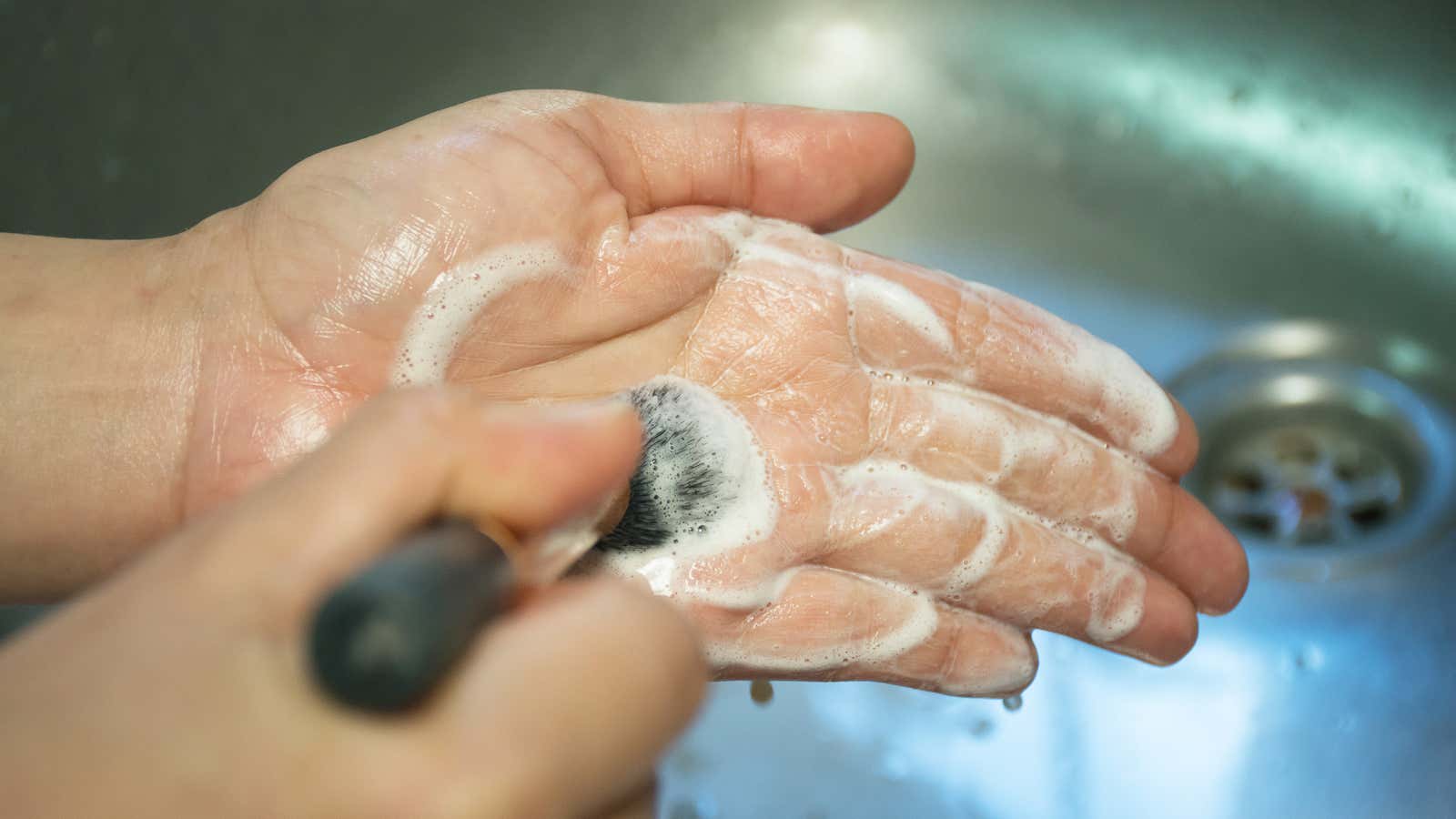How Often Should I Clean My Makeup Brushes?

The first makeup tip I was taught as a kid was never to share mascara or lipstick. Despite its harmlessness, the microorganisms that live inside our eyelashes and on our faces were enough to scare me about hygiene. Now that the fear of the coronavirus – a much more fitting fear – has refocused our collective focus on washing and disinfecting, why not our makeup brushes? Here’s how to clean them.
How often should you clean your brushes?
Makeup brushes can be a source of bacteria. A study published in the Journal of Applied Microbiology found that “about 79–90% of all products used [lipstick, lip gloss, eyeliner, mascara, and cosmetic blenders] were contaminated with bacteria,” including fungus and E. coli. So how should you clean your brushes and how often?
The American Academy of Dermatology (AAD) recommends washing your makeup brushes and tools every 7-10 days : “To protect your skin and kill any harmful bacteria that lingers on your makeup brushes.”
I spoke with makeup artist Ashley Webb ofAshley Webb Beauty about her procedures and brush cleaning tips. On set, she tries to wash her makeup brushes and sponges after each use. However, when time does not allow for washes between each application, she uses makeup wipes as a quick alternative to a full rinse. For average makeup users, cleaning after each use may not be necessary, and a weekly wash will help.
As mentioned in the AAD , cleaning brushes also protect the wearer’s skin. “If you have problem skin such as acne or eczema, using dirty brushes can make these conditions worse,” says Webb. Regular cleaning can reduce the number of flashes .
How to clean makeup brushes
The best part is that washing your brushes is pretty simple: you just need soap and water. It’s as easy as rinsing the brush ends under warm water and washing and rinsing the bristles with your palm or fingertips .
Helpful tools like silicone makeup cleaning mats and cleaning solutions can also be effective in removing excess makeup and bacteria from your brushes. In a Huffington Post UK article on the subject, makeup artist Belle Jorden suggests doing this deep cleaning every two to four weeks. A silicone cleaning mat is placed in the sink, and the brushes are rubbed against the rubber mat using soap and water to clean between the hairs of the brushes.
Pay attention to the types of brushes you have, as different brushes require different attention. “For animal hair brushes, you can use a mild shampoo or baby shampoo,” explains Webb. Since animal hair makeup brushes are natural, they tend to be softer and more gentle to handle, while synthetic brushes are generally more durable and made from nylon and polyester fibers. Be sure to give your brushes the attention they need without ruining your tools.
In this video, Webb demonstrates the use of an antibacterial soap bar for synthetic bristle brushes.
Fresh brushes create fresh colors
Scrubbing not only prevents breakouts and kills bacteria, but it also makes makeup application cleaner and prevents unintentional color mixing. “If you painted one wall red and one wall blue, you would be sure to wash your paint brushes between applications,” says Webb. “The same can be said for makeup brushes.” So clean your brushes as often as possible.